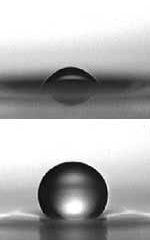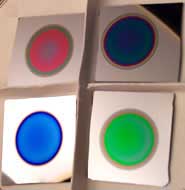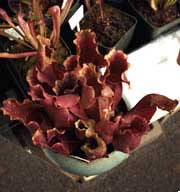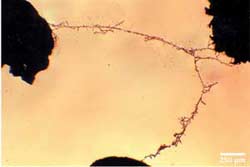Latest News

Imaging Study Produces Genetic Brain Maps
Scientists are finally beginning to understand how common genetic differences among individuals underlie differences in the structures that make up their brains. In the first attempt to actually map these variations, neurologist Paul Thompson and colleagues at the University of California at Los Angeles have discovered that brain structures related to cognitive ability and language seem to be under tight genetic control. The group’s findings, which could help explain how diseases like schizophre

Drop in found out
Air lets water droplets skim across the kitchen sink.
Scientists have found the answer to a question pondered over many a kitchen sink: why do little droplets skim across the surface of washing-up water rather than mix with it?
Yacine Amarouchene and colleagues at the University of Bordeaux in Talence, France have discovered that the height from which the drops fall has no effect on their lifespan 1 .
Soap, detergent – and indeed food grease – are ’

Bacteria make bandage glow
A microelectronic sensor may alert doctors to bacterial hazards.
Smart bandages could soon alert doctors to the presence of certain bacteria in a wound by glowing different colours. Researchers in the United States have created a tiny device that emits faint light of two colours in response to two types of bug 1 .
Benjamin Miller, of the University of Rochester in New York State, and colleagues hope that a refined sensor might ultimately generate an instant an

Wall-to-wall power
Solar cells printed like wallpaper.
Solar cells might one day be produced by the roll, as cheaply and easily as wallpaper. Scientists in Arizona are using screen-printing, a technique developed for patterning fabrics, to produce plastic solar cells 1 .
The technique is another step towards the general availability of solar power from flexible devices on plastic sheets or glass panels. The basic materials of a photovoltaic cell are inexpensive, but combining t

Genes show seasonal trends
Mosquitoes’ evolve rapidly in response to global warming.
Mosquitoes are holing up later as winters get warmer, US ecologists have shown. This is the first genetic adaptation to global warming to be identified. Less flexible animals could face extinction, they warn.
The North American mosquito Wyeomyia smithii uses shortening day length to judge when to bed down for the winter. Modern mozzies wait nine days more than their ancestors did in 1972, William Bradshaw and Christin

Gold Nanowires Grow on Their Own
Scientists can coax tiny metal particles to self-assemble into microscopic wires that conduct electricity and repair themselves, new research reveals. Kevin D. Hermanson of the University of Delaware and his colleagues, who published their finding in the current issue of Science, suggest that such nanowires may prove useful for wet electronic and bioelectric circuits.
The researchers placed particles of gold ranging in diameter from 15 to 30 nanometers in a fluid suspension within a thin ch











